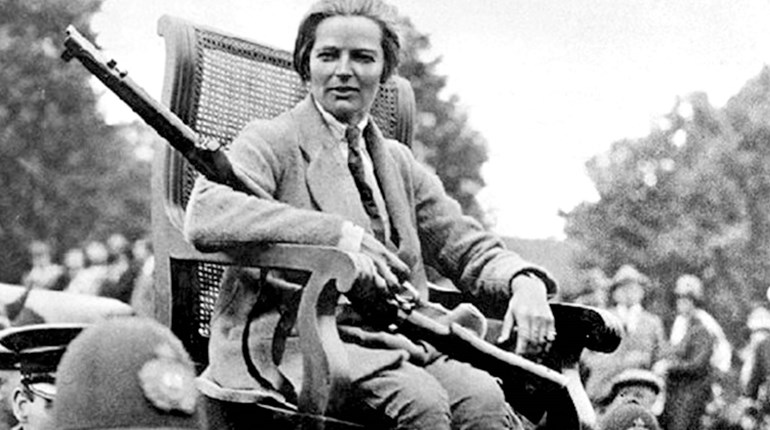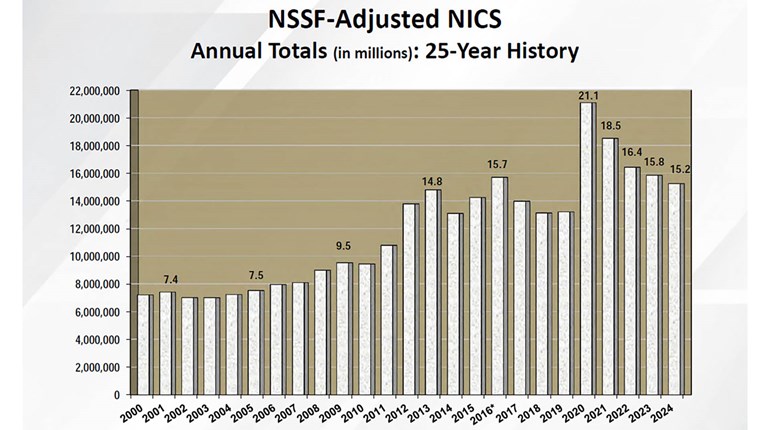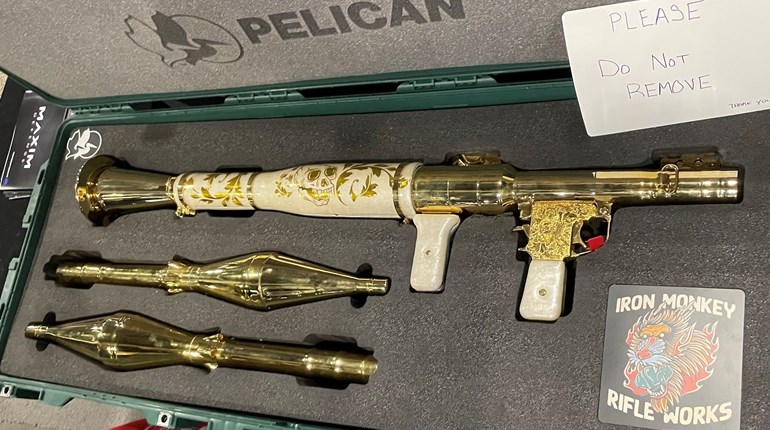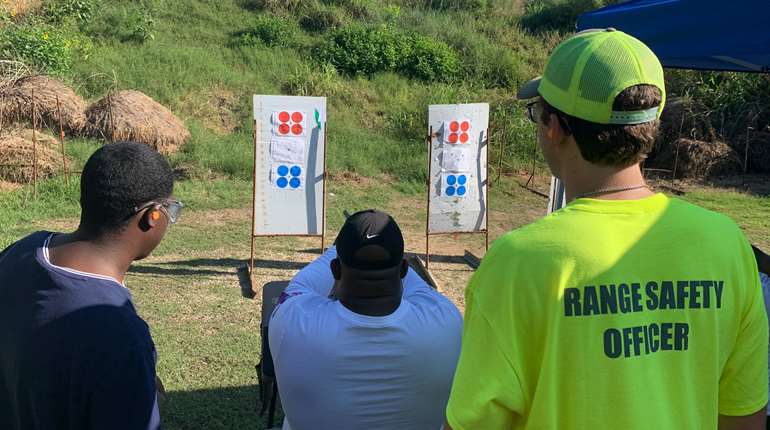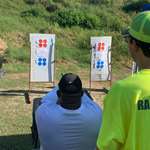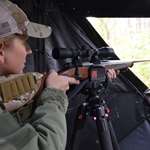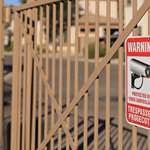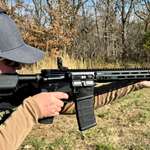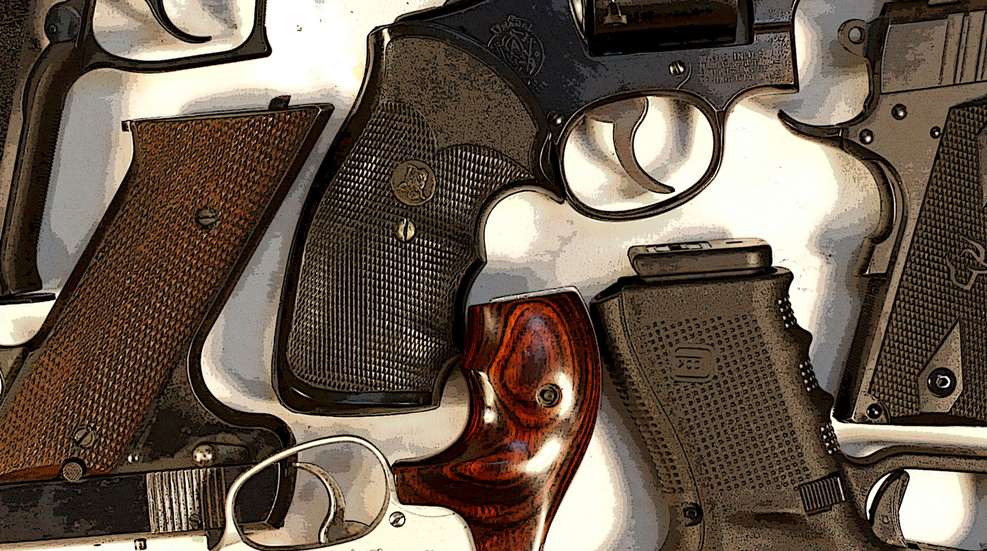
You may have heard comments like this, from men and women alike, when referring to handguns:
“I can’t shoot; it hurts my hands.”
“My hand is just too small to be any good at shooting.”
“I can only handle shooting .22s.”
Baloney. It’s all about the grip (on the gun) and your grip (with your hands). If you have the right size grip frame and grip material, along with a proper shooting grip, it can make a world of difference in your shooting ability. Just like shoes are designed to accommodate different sizes and shapes of feet, so are handgun grips. First, a few words of definition:
Grip frame. This is where your hand grips the gun on both polymer-framed and metal-framed handguns.
Backstraps and grip modules. Backstraps are small, shaped pieces of polymer that snap on the back part of the grip frame, thus increasing the grip width for shooters with larger hands. In some polymer-framed pistols, the entire lower frame (just the outer polymer shell) can be swapped for different-sized grip modules.
Side panels and wraparounds. These are removeable panels that cover the sides of the metal grip frame and come in different colors and textures—like on 1911s. Wraparounds cover the sides and front or back of the exposed grip frame, and may add finger grooves to grips.
Grip material and texture. This can be what the frame is made of, such as polymer-framed guns or the material of the panel covering metal-framed guns, such as synthetic, wood, rubber, etc. Textures and patterns are cut or molded into the grip material.
There are four measurements of a handgun’s grip frame to consider when sizing up a gun to see if it’s right for you: grip circumference, width, trigger reach and grip angle.
With each handgun having a different grip angle, it will in turn have a slightly different “point of aim” depending on the person holding it and how they hold it. To see how your pistol aims for you, set up a target about chest-high in a safe area. After making sure the firearm is unloaded, grasp the handgun with the “V” web of your dominant hand, wrapping your lower three fingers around the grip, making sure your hand is up as high as possible on the back of the firearm. Your index finger should be off the trigger, alongside the slide/frame, and your thumb should be parallel with the frame on the other side. Wrap your support hand around your dominant hand with as much of your palm touching the grip as possible, allowing your support hand thumb to rest alongside your other thumb.
Now, facing the target, close your eyes and push the handgun out from chest-height toward the target. Open your eyes and see how closely the sights are aligned on the target. Is the front sight a little low, high or level with the rear sight? A handgun that has a “natural” aim for you has the right grip angle and will aid in your ability to quickly acquire the target.
If you find that your firearm’s grip angle is a little off for you, not to worry. With repetitive practice you can build muscle memory that will compensate for it, or you can simply replace the grip for your firearm. This is crucial for pistols equipped with micro red dot sights, so that you’re not hunting for the dot each time you put the gun on target.
Grip Frame
On polymer-framed pistols, like Glocks, the grip is usually molded externally as part of the frame. Metal-framed, semi-automatic pistols and revolvers usually have grip panels or wraparounds of a non-metal material.

From left: On polymer-framed guns like this Glock 19, the grip is part of the frame; S&W K-frame revolver shows the metal grip frame that is usually covered with side panels or a wrap-around grip; a Taurus 1911 Officer's metal grip frame is usually covered with side panels.
When looking at the size of pistols themselves, full-size and compact models usually provide enough space for your lower three fingers to wrap around the grip. To make sub-compact pistols more concealable, the grip frame is often truncated, which means it lacks space for your pinky finger. This is sometimes remedied with magazines that have “pinky” extension base plates or an extended magazine that has an extension that becomes part of the grip. If your pistol is not supplied with extended magazines, and you find that you need a little more space for that last finger, there are usually many aftermarket options available.

Different Glock model training guns show a sub-compact (left), a compact (center) and full-size (right). Notice how the length of the grip changes, providing more for the hand to hold.

Extended magazines provide a little extra space for your pinky finger to rest: Springfield 911 with flush magazine (far left) and with an extended magazine (center left) and the Springfield XD-S Mod.2 with a pinky extension magazine base plate (center right) and extended magazine (far right).
Another factor to consider with semi-automatic pistols is how easily you can reach the magazine release button/lever. These are usually operated with your dominant thumb, and many different sized hands must shift their grip to reach the button, although some ambidextrous releases can be actuated with the index finger. The greater the width and thickness of the grip, which is the case with many double-stack magazine pistols, the more your hand will need to shift to press the release.
Just as you would measure the “length of pull” on a rifle or shotgun, it’s also important to measure the trigger reach on a handgun. With your firearm unloaded, hold it with a proper shooting grip and reach your finger out to touch the face of the trigger. Make sure the pad of your index finger can touch squarely on the front of the trigger. A good trigger reach allows your finger to have the sensitivity to actuate the trigger and feel the trigger’s reset. On double-action guns with heavier trigger pulls, the trigger reach must allow you to use the full strength of your index finger.

Notice how the trigger reach changes between the SIG Sauer P226 training gun model (left) and the SIG Sauer P226 E2 (right) with "enhanced ergonomics" featuring a slimmed down grip.
Having a well-fitting grip frame is also important for handguns that have grip safeties, such as a 1911. The grip safety must be fully depressed by the squeeze of your hand before the firearm will function. If your hand is misaligned you may not depress the grip safety enough to allow the gun to fire.
Backstraps and Grip Modules
Many manufacturers today supply their polymer-framed handguns with an assortment of interchangeable backstrap inserts. Several, like SIG Sauer on several of its models. Sometimes the circumference of polymer-framed guns is not customizable, meaning it is what it is, unless you take it to a custom gunsmith who will alter the grip by shaving or melting its contours.

Many semi-automatic pistols are supplied with backstraps to increase the size of the grip width to accommodate different shooters, such as on this Glock 44.
Side Panels and Wraparounds
Grip side panels are made in every color, design and material that you can imagine, from antler bone to synthetic pearl to meteorites. Panels are two separate pieces that fit on either side of the grip and a wraparound panel encases the grip frame.

A Springfield 1911 with various side panels that cover the grip frame: (left to right) standard checkered wood grips, finished wood panels, rubber panels with checkering and a wrap-around rubber grip that adds finger grooves.
By looking at the different profiles of grip panels, you can see how they can change your grip on a firearm. The shape of the side and wrap-around panels is another factor. For example, the S&W J-frame revolver frame supports a number of different grip options, such as checkered wooden panels, a smooth finger-grooved wraparound grip and a rubber wraparound grip that encloses the entire grip frame. All of these transform the J-frame’s metal grip frame to fit different hands, while still conforming to various methods of concealment and providing a solid grip on a smaller revolver.

This S&W J-frame features several different grips: wooden panels (left), a two-piece rosewood wrap-around grip that provides finger grooves (center) and a rubber wrap-around grip (right) that slips over the entire grip frame.
Grip Material and Texture
Various materials are used to make grips. We’ve mentioned polymer-framed pistols, where polymer—a more recently engineered type of very rigid and durable plastic—makes up the entire lower frame of the gun. Polymer is lighter than steel, won’t rust, and its flexibility is a good absorber of a gun’s recoil. Wooden grips and panels that cover metal-framed guns come in various types of woods, such as walnut, rosewood or even laminate. Other common materials include rubber, acrylic and more recently a material called “G-10,” which is a highly durable composite of fiberglass and epoxy resin. Some consider the texture on flashy G-10 grips too aggressive, and it can be abrasive to some clothing when carrying concealed.

G-10 grip panels on a Springfield 911. G-10 combines fiberglass and epoxy resin to create a durable and aggressively textured grip in a multitude of colors.
A grip aids in absorbing the recoil of a handgun and some materials do this better than others. You may find that you feel more of a handgun’s recoil where the metal grip frame is exposed, as the frame is directly impacting your palm. Wrap-around rubber grips are normally good recoil absorbers, and rubber recoil pads are often used in the rifle and shotgun world. Concealed carriers beware: A rubber handgun grip can tend to hang up on clothing if you carry concealed.
The act of texturing the wood on the stock of a firearm is almost as old as the history of firearms themselves. “Checkering,” the tiny lines that are cut or pressed in a design of an intersecting pattern, give a slightly rougher texture to provide a better handhold on the finished wood of rifle and shotgun stocks. Texturing a handgun grip can also prove to be worthwhile in maintaining a firm grip on the firearm. In polymer-framed pistols, the polymer grip frame is molded with a range of textures that replicate everything from checkering to stippling to sandpaper. The checkering and texturing can vary from smooth to aggressive. Some grip texturing can feel very rough when holding the gun in your hand, and might be amplified when firing the gun over an extended range session.

Examples of checkering in a wooden shotgun stock, a 1911 grip panel and the grip of a revolver. Checkering provides texture to aid a shooter's hold on the firearm.

Textures are molded into polymer grips, like on this SIG Sauer P226 E2 (left), or into the grip area of polymer-framed guns, such as this Glock 44 (center) and Springfield XD-S Mod.2 (right).
The purpose of texturing a handgun grip is to ensure your hand doesn’t slip off the gun while you are handling it, drawing it and firing it. A polished grip can become slick if it gets wet or if your hand is sweaty. On semi-auto pistols whose grips are molded and not interchangeable, some owners may choose to slip a rubber sleeve on the grip. Others buy something called “grip tape,” a sandpaperypeel-and-stick tape.
I Understand Grips, Now What?
Whether it be the size or texture of the grip, you are going to want a handgun that has a grip that feels comfortable in your hand. Before buying a new handgun, try out different models at your local gun shop. This will help you determine what you like and what you don’t. And, while a lot of decisions about the kind of grip you prefer can be made without firing the gun, it will take some range time to fully be able to tell how well you like your gun’s grip.
If after trying different grips and materials you are still having issues withstanding firing more than a few rounds in your handgun, you might consider using shooting gloves. Shooting gloves are designed to allow full use of your fingers and thumbs, while placing extra padding in the palms of your hands. Shooting gloves may provide that extra comfort needed to put in extended range training.

Shooting gloves can add extra padding when shooting for extended range sessions.
Obtaining a good grip is the key to building a good shooting technique, but it’s hard to do if your gun’s grip isn’t cooperating with you. That’s why it is important to come to grips with your handgun’s grip.












